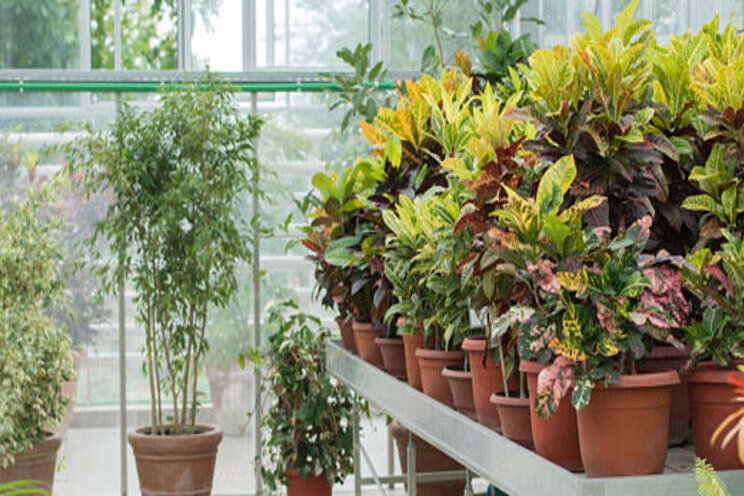Greenhouse features & accessories
Added on 02 April 2020

Accessories such as staging and shading are also worth your time to consider, as they make all the difference to how well your greenhouse works day to day. Discover which are the best and worst greenhouse brands.
Greenhouse vents
You will need at least two vents in the roof and one at the side to give a good flow of air. The number of vents depends on the size of the greenhouse, but consider paying extra for additional ones. An automatic vent-opener is a feature well worth paying for; it contains a cylinder of wax that expands and opens in heat, then closes when cooler so you're reliant on being there to open and shut the vents as the temperature changes so your plants are less likely to be chilled or cooked. Internal height Anyone who will be using the greenhouse should make sure they can get in and out of the door easily and that the space feels comfortable once inside (low greenhouses can feel claustrophobic).
Good design
Look at how the panes of glass fit into the frame: do the panes overlap? (which makes cleaning difficult). How sturdy is the door? These are all points worth checking before you buy your greenhouse.
Shelving or staging
Greenhouse shelving, also known as staging, will display plants and provide a surface for you to sow seeds, take cuttings etc. Slatted staging is good for letting light through the lower shelves and can encourage good air circulation which can reduce the risk of fungal diseases. Solid staging is needed if you want pots to sit on capillary matting to make watering easier. You can either buy it at the same time that you buy your greenhouse or get it later on. Both wooden and aluminium staging is available so you can get the same type as the greenhouse frame. The alternative is to make your own staging or adapt existing furniture such as shoe racks. Staging that is easily removed can be useful if you plan to use the floor space later in the season for growing plants in pots or growing bags.
Shading
Greenhouses can get very hot in summer so shading is important to help keep things cooler. Shading blinds or netting can be fitted outside or inside the greenhouse or you paint on a white shading wash, which looks a bit unsightly in the summer but soon washes off. If you choose to use shading netting, you can use drawing pins to fix it to a wooden frame or special fixings if you have an aluminium frame.
Heated propagator or heated pad
Many seeds and cuttings benefit from some extra heat. A heated propagator is a useful way of providing this and you can get models of different sizes depending on how many pots or trays you want to put in. The clear propagator lid helps to retain the warmth and maintain a damp atmosphere for your plants. Look for a model with a thermostat as this will allow you to preset the temperature you would like. An alternative to a heated propagator is a heated pad or a sand bench with heated cables. These usually provide a larger area than a traditional propagator. Whichever you choose, you'll need an outdoor socket with an RCD to provide the power needed to run them. Min/Max thermometer Keeping an eye on the temperature of the greenhouse will help you ensure your plants aren't getting chilled or cooked. A min/max thermometer will record both the lowest and highest temperatures as well as displaying the current temperature. You can choose from traditional models that sit in the greenhouse or battery-powered ones with a remote sensor whose readings you can view from the comfort of your house.
Propagating material
If you're planning to raise plants in your greenhouse, you'll need a selection of trays and pots to grow them in. Modular trays have individual compartments for a number of plants within the same tray and help to avoid root disturbance when you take the plants out. If you're concerned about using plastic, either look for recycled pots (many garden centres offer these) or use a soil-block maker which creates blocks of compost to grow your plants in. Clean labels are invaluable for identifying what you're growing. These can be cleaned with wirewool or sandpaper at the end of the season so they can be reused. A pencil is the simplest way of marking them. A potting tray is a useful accessory as you can stand trays and pots in it while filling them with compost and then simply tip the excess compost back into the bag so it's not wasted. We'd always recommend that you use a Best Buy compost.
Watering
Plants in a greenhouse can dry out surprisingly quickly so you may wish to install an irrigation system to keep them watered while you're out. You can run these from the mains or from a water butt using a water-butt pump to move the water. Adding a watering timer/computer will allow you to set the water to switch on and off without you needing to be there.
Alternatively you may prefer to use self-watering pots with a water reservoir such as Duogrow tomato pots. Another option is capillary matting, which will absorb water when you wet it and gradually release it to plants so can help keep plants on staging moist. You'll need a solid base under it though.
A good tip is to fill watering cans in the morning and leave them in the greenhouse to warm the water during the day so the temperature doesn't shock the plants.
Source and Photo Courtesy of Which UK
Source: Which UK
More news















